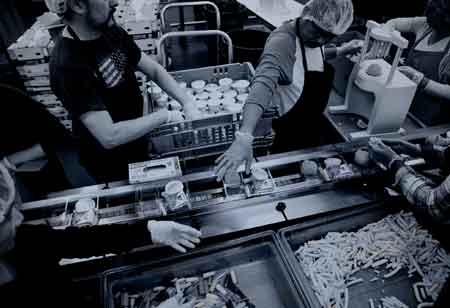Thank you for Subscribing to Food Business Review Weekly Brief
What Should You Consider While Making Wine?
You should be aware of the variables that might impact the results of your work before attempting to make any wine.

By
Food Business Review | Wednesday, December 04, 2024
Stay ahead of the industry with exclusive feature stories on the top companies, expert insights and the latest news delivered straight to your inbox. Subscribe today.

You should be aware of the variables that might impact the results of your work before attempting to make any wine. You may improve your batch of wine's taste, clarity, and general quality by taking the time to understand at least a few of the affecting aspects. Grape ripeness level, cold soaking, fermentation temperatures, types of aging containers, and capping method are some variables that affect wine quality.
Fremont, CA: You should be aware of the variables that might impact the results of your work before attempting to make any wine. You may improve your batch of wine's taste, clarity, and general quality by taking the time to understand at least a few of the affecting aspects. Here are five of them:
Grape Ripeness Level
Their level of ripeness determines the sweetness and acidity level of grapes. The sweetness of the grapes increases with increasing harvesting time while the acidity decreases. These grapes may require artificially acidifying your wine to achieve the desired taste.
Cold Soaking
Cold soaking takes place before alcohol is produced in the wine and permits the grape skins to remain in touch with the most without promoting fermentation. Additionally, cold soaking promotes the optimal fruitiness for the targeted wine while avoiding the harsh tannins and rich color development. The duration of the grape skins' contact with the most is known as the maceration period.
Fermentation Temperatures
Fermentation temperature is another factor that affects wine's color and flavor. Red wines benefit from hotter temperatures between 80 and 100 degrees Celsius, while rosé and white wines benefit from colder fermentation temperatures no more than 50 degrees Celsius. For best results, choose the appropriate fermentation temperature for the wine you plan to make, as various wines require varying rates of alcohol generation and yeast metabolization.
Types of Aging Containers
These days, oak barrels are not the only maturing vessels available for wine. You can still opt to utilize these or use steel tanks or acacia ones. The steel tanks drastically reduce the wine's exposure to oxygen, making them perfect for zesty white wines, even if the oak and acacia give the wine distinct qualities by letting some oxygen into it. Steel tanks can also be equipped with wood substitutes to benefit from both approaches.
Capping Method
The quality of wine is also influenced by the cap used to seal the bottle. Examples of this are screw caps that keep air out of the wine or natural corks that fit into the bottle quickly and create a tight seal while allowing air to interact with the wine during age. One disadvantage of natural corks is the possibility of receiving a tainted batch. This gives your wine a moldy smell. Since the screw caps restrict the oxygen's ability to interact with the wine, there is a greater chance that sulfides may produce repellent odors.






